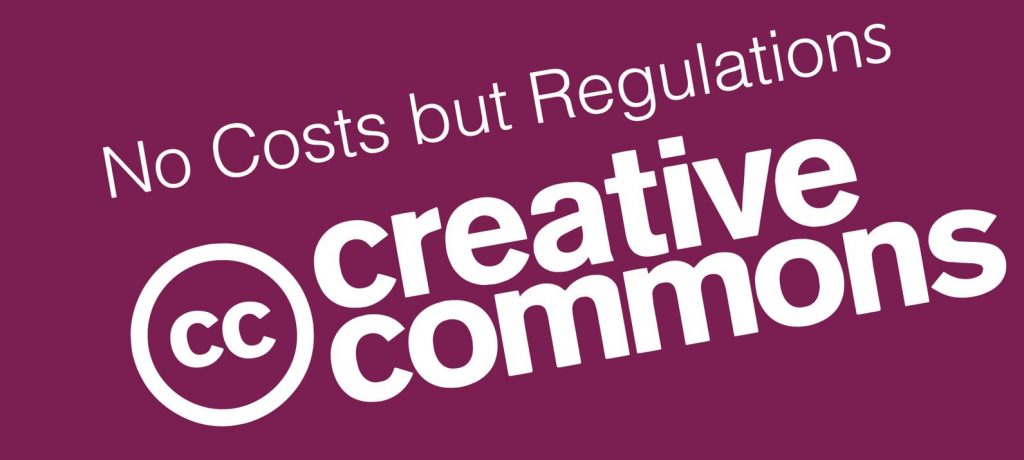Photo Usage Rights: Here's How to License Images Correctly
Our extensive guide informs you about what you should pay attention to when licensing images.
If you’re a photographer, chances are your goal is probably to earn money from your photographs or license images out for certain uses, at the very least.
If so, you’re going to need some basic knowledge about photo usage rights and how to license images correctly. Fortunately for you, an extensive spectrum of licensing agreements is available to cover all different types of usage – from only strictly limited rights to exclusive rights of use! We’ve outlined everything you need to consider when licensing photos.
An Overview of all the Topics:
► Which photo licensing options exist for photographers?
► What can be regulated with an image license?
► How should photographers formulate their photo licensing agreements?
► What else should photographers consider when licensing images?
► How to determine photo licensing fees
► Pre-formulated image licensing provisions: Creative Commons licenses
Which photo licensing options exist for photographers?
Granting photo usage rights for an image according to copyright law
In order to license images and grant photo usage rights, you need to be either the author of the images, or otherwise authorized to license the images. For example, agencies are also authorized to license images if the author has contractually allowed them to be granted.
The author is someone who has created a work protected by copyright law. The author has the sole right to determine when and how the work is used for commercial or other purposes.
Image copyrights exist to protect creators and their work.
Would you like to find out where your images are used on the internet?
What can be regulated with an image license?
The most common types of use in photography
A license is a contract between licensor and licensee. Image licenses regulate the scope of use as well as the types of use and if applicable, the limitations of use.
Through the image licensing agreement, the licensor grants the licensee photo usage rights for an image for a fee, also known as the licensing fee. The licensing agreement allows the licensor to market his or her work or the work on which he/she is the rights owner by entitling usage rights to the licensee. Gratuitous image licensing agreements also exist, for example Creative Commons licenses.
The types of use describe the content-related configuration of use. The most common types of use regulated in image licensing agreements are:
- editorial use
- commercial use (e.g. on commercial products)
- use for promotional purposes

How should photographers formulate their photo licensing agreements?
This is important for determining the contract’s provisions
Freedom of contract means that there are no specific limitations concerning the parties or subject matters of a contract in regard to photo licenses.
A particular format is not required to conclude the agreement. Theoretically, an oral agreement – excluding specific exceptions – is also sufficient.
That being said, photo licensing agreements should always be concluded in writing. When a license is not in writing, the content of the agreement can be undermined by unreliable witness testimonies. In a worst-case scenario this results in a he-said-she-said style dispute. In the case of a dispute over the extent of the photo license, a written agreement provides crystal clarity.

What are the typical contractual provisions for an image license?
There are indeed no binding content-based requirements due to the freedom of contract, however some points are typically regulated in a licensing agreement when licensing images:
► Types of usage rights
One of the first things you can decide on when licensing images is the types of usage rights you would like to grant. There are two types – non-exclusive rights of use and exclusive rights of use.
Non-exclusive rights of use authorize the licensee with the rights to use a work only in the predefined way that is allowed. An important point is that this does not allocate photo usage rights exclusively. That means that the author or the rights owner can allocate non-exclusive usage rights to multiple people at the same time.
If exclusive rights of use are granted, the licensee has the exclusive right to license images that they own the rights to. Even the author may then no longer use their own work unless something else has been agreed upon. Additionally, you can contractually determine that the use remains reserved to the author.
► Duration, contents, and spatial modalities of image licenses
All usage rights can be limited temporally, by content, or spatially. The duration of use is not automatically unlimited. It can be set by the licensor.
When licensing images, usage rights can be limited to commercial or purely private use. The use of the image can also be spatially limited to a specific country or continent.
Due to the global accessibility of the content on the internet, agreeing to a geographically limited image license is not very sensible.
In order to avoid potential disputes, it is helpful however to formulate the licensing agreement as precisely as possible and also to determine and uphold the purpose of the agreement.
► Image Licenses: The type of use
After it is determined whether exclusive or non-exclusive rights of use have been granted through an image licensing agreement, you should also determine the ways in which the image may be used. A type of use is clearly definable – this refers to whether the work will be used technically (like scanning, copying, printing, CD burning) or commercially (like distribution, further utilization).
The type of use can apply to the regulation of online or offline use, the use of print media, the editorial or commercial use or use for promotional purposes. The author or the rights owner can grant the licensee the right to use the work for single, multiple or even all types of use.
► Images Licenses: The designation of the author
The designation of the author should also be foreseen in the image licensing agreement. The author may decide whether he/she has to be named and can contractually determine it.
If nothing regarding the designation is agreed upon, it is generally the case that the author is to be immediately named on the work. Many licensees are unaware of this, so an explicit provision regarding the designation of the author is recommended.
It is also possible to agree upon where the author should be named. Should the licensee indicate the full name, an abbreviation, a pseudonym, etc.? Is he/she allowed to decide the designation of the author entirely? All of these options can be contractually agreed upon.
► Image Licenses: The right to edit
The licensor can also decide if and to what extent the licensee is entitled to a right to edit. In this regard, there is nothing that cannot be agreed upon. You can for example come to agreements on whether the licensee may fully redesign the image or whether only minor revisions can be made, such as size and color. A complete list of editing prohibitions is also possible.
Would you like to find out where your images are used on the internet?

What else should photographers consider when licensing images?
In the license agreement, the authorization to issue sublicenses and transfer usage rights should additionally be foreseen. It is thereby determined, whether the licensee is allowed to grant his or her own sublicenses, or may completely or partially transfer usage rights for an image to a third party. Those can be non-exclusive or exclusive rights of use.
In addition, a rights guarantee in the photo licensing agreement can be useful. It confirms that the licensor really owns the usage rights and is allowed to transfer them. In order for the licensee to be exempted from third-party claims, a liability exemption must be agreed upon.
If a third-party asserts claims against the licensee (e.g. someone who did not agree with the transfer of a photo on which he is depicted), the licensee may assert claims against the licensor if the licensor was not entitled to grant the relevant photo usage rights.
If the photo licensing agreement concerns the granting of rights within the scope of a commissioned work, it is recommended to adhere to the purpose of the commission. This helps later with the interpretation of the extent of the license, in the event that something has not been agreed upon or something has not been agreed upon clearly enough.
Do you want to end a licensing agreement? Terminating an agreement conforms to the common rules for continuing contracts. If the agreement was entered into for a specified duration, it automatically ends upon the expiration of the duration agreed. If the licensing agreement is for an unspecified duration, you need a declaration of intention from one party (unilateral termination) or both parties (mutual resolution).
This can include a breach of contract or non-performance, for example . The terminating party must first, however, give the other party the opportunity to eliminate the deficiency unless the deficiency is very severe. In the case of a unilateral termination by notice, eventual termination notice is required; any periods of notice must also be respected.
Would you like to find out where your images are used on the internet?
How to determine photo licensing fees
Remuneration models in practice
The remuneration can be determined freely. So it can be arranged whether the remuneration should occur and, if so, how and when it is to be paid. The amount of the licensing fee depends on various factors, but essentially on the scope of the license granted.
Which types of use are permitted, how long and where the image license is valid, whether non-exclusive or exclusive rights of use are granted and whether the author is to be named also play a role in this. Referencing the price list of others in your industry is a good way to get a general idea about pricing for comparable image licenses on the market. Alternatively, many stock agencies also offer calculation tools that give a rough overview of what amount is usual for which types of use.
It’s also worth noting that there are also variations in remuneration models. A common type of remuneration is the percentage compensation model. It is oriented toward the net sales revenue of the licensee and lies between 3.5% and 12%. Of course, this amount also varies depending on the specific negotiations between the contracting parties. Also common are flat-rate license fee models, which can be calculated using a unit license fee and a minimum license fee.
You can also combine compensation methods with one another; an example of this would be agreeing upon a percentage compensation based on revenue and establishing a minimum license fee, which must be paid in case no revenue is generated.
A good assistance for calculating the license fee in the UK is the licensing and usage calculator of the The Association of Photographers Ltd.

Pre-formulated licensing provisions: CC Licenses
Authors of a work who are primarily concerned with distributing their images have further options when licensing images. For these types of authors, the non-profit organization Creative Commons offers free licensing.
With help from this practical tool, Creative Commons Licenses (CC licenses) can be created quickly and simply. These are simplified, standardized legal licensing provisions that apply to the whole world.
These pre-formulated license terms replace expensive agreements and allow image users to know right away if the image license is appropriate for their use.
That is, however, also the greatest disadvantage of CC licenses. If you license images in this way, you earn no money from your images. The only exception to this would be if someone is interested in commercial use, since these are not covered with the CC license.
An additional disadvantage is that CC licenses are irrevocable. If the images are published once with a CC license, the CC license can never be canceled.
Would you like to find out where your images are used on the internet?
Licenses from image agencies and the use of stock photos
If you do not use the pre-formulated Creative Commons licenses, as a licensor, you can freely formulate the scope of your licenses yourself. Many agencies or stock photo sites have their own self-defined licensing provisions for this purpose. In regard to stock photo licensing, it’s common to come across the following terms:
► Stock photos
Stock photos are images, that are offered on stock photography sites like Fotolia, Shutterstock and Getty Images. They are aimed at mass use and are only available for selected uses. Based on the provider, stock photos may only be used in certain ways or for certain media.
► Royalty-Free License / RF / Royalty-Free Images
The term “royalty-free” is confusing as “royalty-free” images are totally liable to licensing requirements. “Royalty-Free” licenses (RF licenses) came into existence in the 90s. It refers to a term for a license model under which images according to the photo usage rights can be acquired at flat-rate fees, temporarily, medially, and independent of the usage parameters. All RF images are subject to non-exclusive rights of use.
► Rights-Managed License / RM / Rights-Managed Images
“Rights-Managed” (RM) is a traditional description for image licenses that are, for example, granted to image agencies for historical material or especially well-known, iconic photos. The use of images with this type of license is strictly regulated. The photo usage rights for especially high-value images are often exclusively granted and, in many cases, the photographer transfers all rights of use of his or her image.
Notice: With photos of people, a declaration of consent or a modeling contract must be submitted.

Which image licensing agreement is right for you?
Generally speaking, there are no right or wrong image license provisions. The requirements which you set for your licenses depends on the specific images and on the purpose of use. CC licenses and stock licenses are more suitable for hobby photographers and generally bring in little to no revenue. Professional photographers, however, are better off without CC licenses and should opt for agreements with clearly regulated terms of use instead.
Royalty-Free licenses offer you the potential to make money for your images relatively easily, however there is also the possibility for low revenue. If sharing Rights-Managed licensed images with image agencies, you will be able to reach a much more targeted audiences for your images, however, not every image sells equally well. Fees will vary by agency and image material.
Licensing agreements have relatively wide and diverse application areas and are, in terms of content only, hard to be standardized. To be more precise, there is not one, but rather an array of very specific licensing agreements to choose from depending on the type of use you would like to grant.
In practice, this represents a challenge; you must consider that the agreement provides both parties a clear legal framework that is adjusted to the respective particular requirements as concretely as possible. While legislators do allows the parties involved a considerable scope of discretion, each basic element of the agreement should preferably be contractually clarified and stipulated
Our recommendation:
To ensure successful licensing, you should draft a licensing agreement that is proofread by a lawyer and preferably one who is knowledgeable about copyright and contract law. Since a lot of money may be involved, it is important that the agreement is legally sound. If you do not wish to work together with a lawyer, we recommend that you as the author first consider the most important questions regarding licensing agreements:
- Which licensing model is right for me?
- What purposes should my images be licensed for?
- To what extent would I like to grant usage rights?
- Would I like the usage rights to be limited temporally, by content, or spatially?
- How can I calculate my image licensing fee correctly?
It is essential for photographers and creative people to contractually define licensing conditions in order to protect themselves against licensees and to avoid disputes later on down the line. The license agreement should define the scope of use, clarify what is lawful and what is unlawful, and help quantify damages.
Would you like to find out if your images are being used online without a valid license?
We would be glad to help you! Copytrack searches the Internet for copies of your images and shows you all of the websites your images appear on.
If there are images included that are used without a valid license, there is the possibility of licensing these retrospectively – without any effort from you.
Copytrack takes charge of the enforcement of your rights. The best part is that our service is risk free for you – we only collect a commission if we successfully collect compensation for an illegal usage. Try it out and start tracking your images today.
Would you like to find out where your images are used on the internet?

